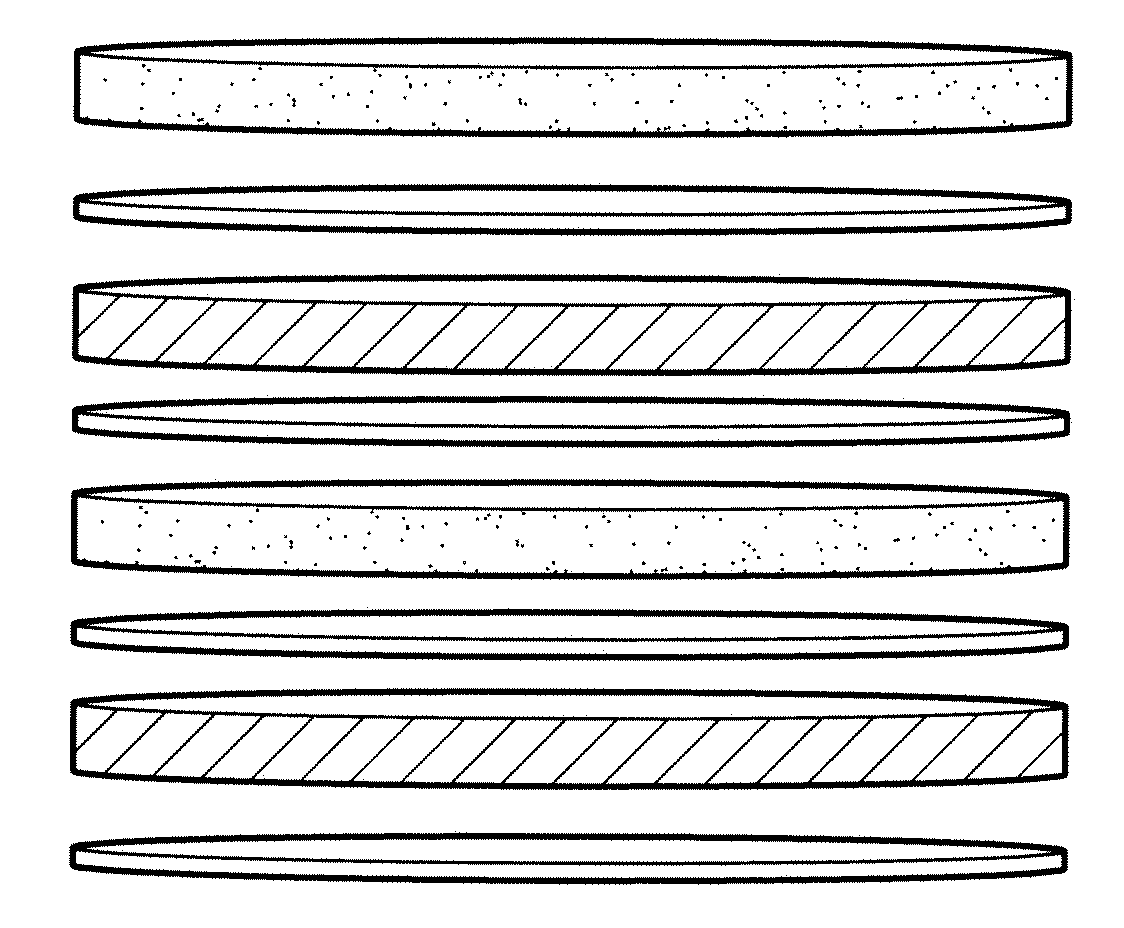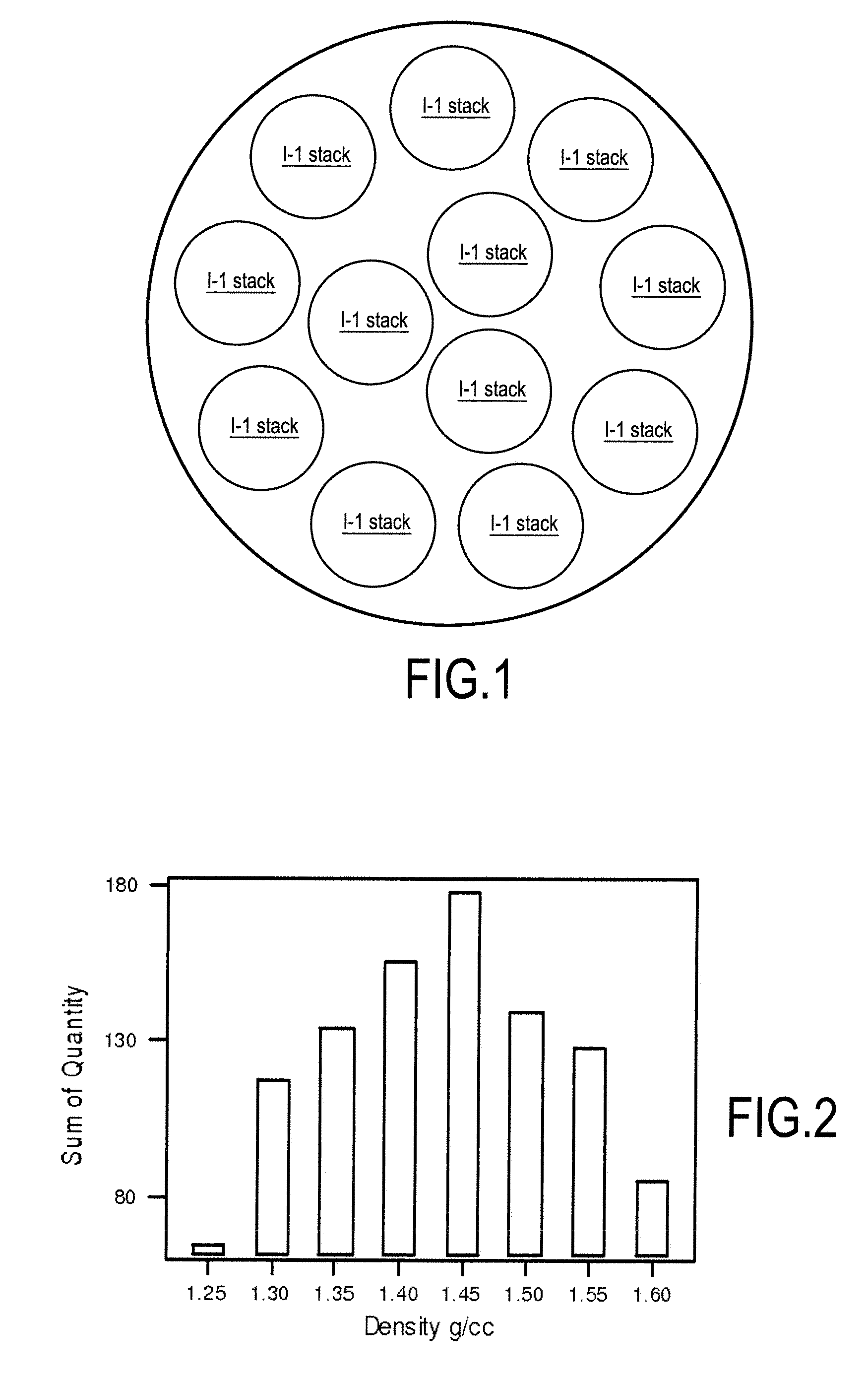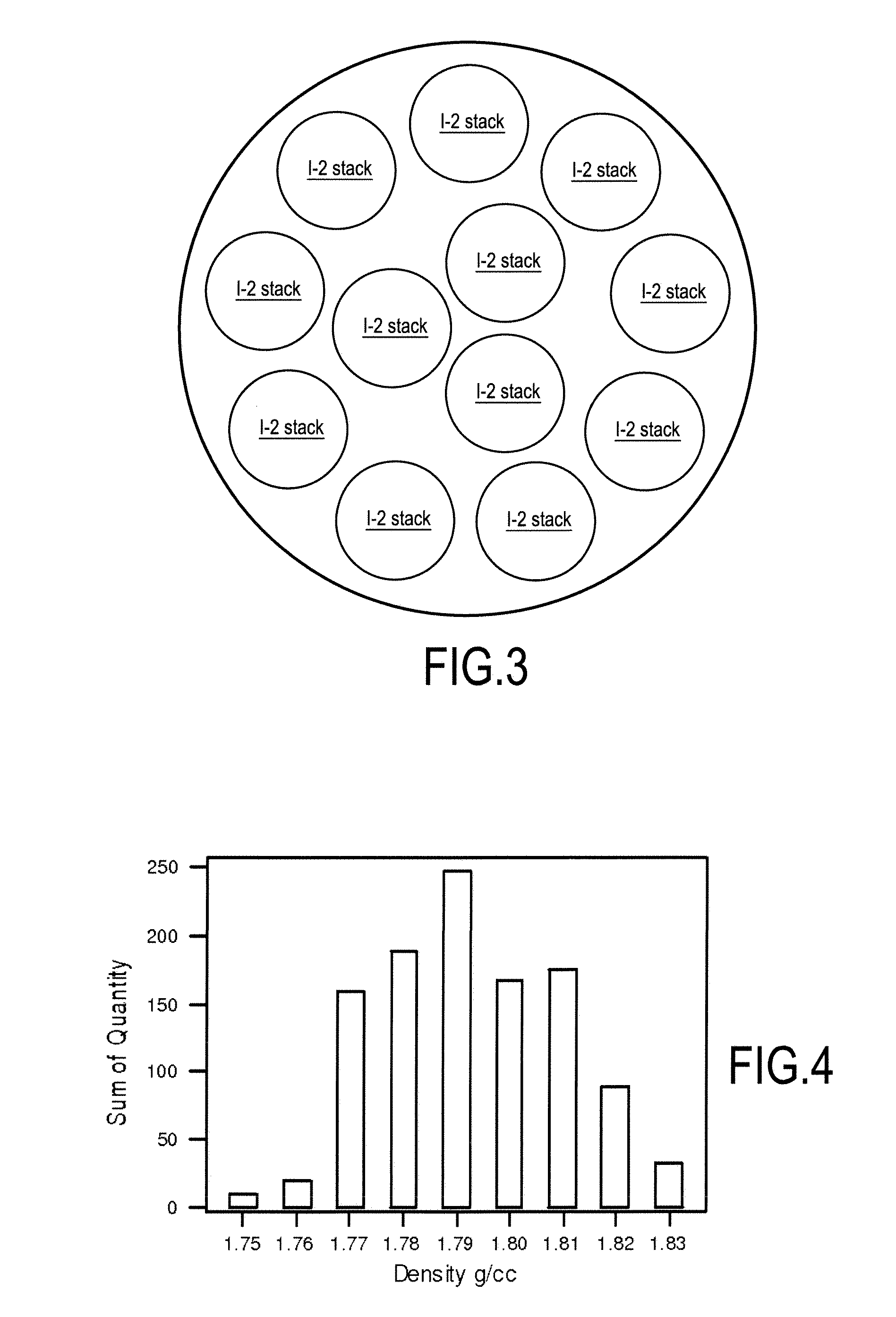Method of Densifying Porous Articles
a technology of densification and porous articles, which is applied in the direction of coatings, metallic material coating processes, chemical vapor deposition coatings, etc., can solve the problems of large thermal gradients in horizontal or transverse planes, poor efficiency of conventional gas preheaters, and uneven densification of internal surfaces. achieve the effect of reducing temperature gradients, improving heat distribution, and reducing densification gradients
- Summary
- Abstract
- Description
- Claims
- Application Information
AI Technical Summary
Benefits of technology
Problems solved by technology
Method used
Image
Examples
example 1
see FIGS. 7 and 9
[0037]a. Approximately 1100+ / −100 substrates in a standard CVI load.[0038]b. Total load is approximately 50% I-1 parts and approximately 50% 1-2 parts.[0039]c. Cycle time could be reduced by about 12% compared with usual conventional cycles.[0040]d. Use tray 1 (on the bottom), 2, and 7 (on the top) for 1-2 parts (see FIG. 7) and tray 3, 4, 5, and 6 for I-1 parts (see FIG. 9).[0041]e. In particular, utilize the lower temperature top and bottom zones for I-2 parts (i.e., trays 1 and 7).[0042]f. Minimize the large density gradient in the full I-1 loading configuration. I-1 parts are obtained having a bulk density from 1.35 g / cc to 1.55 g / cc.
example 2
see FIGS. 11 and 13
[0043]a. Approximately 1100 (±100) substrates in a standard CVI load.[0044]b. Load consists of 50% I-1 parts and 50% 1-2 parts.[0045]c. Cycle time could be reduced by about 24%.[0046]d. Uses lateral stacks in trays 2-6 for the I-1 parts (see FIG. 9) and the rest for the 1-2 parts (see FIG. 11). See FIGS. 12 and 14.[0047]e. Provides better temperature distribution in the horizontal plane, especially for the I-1 preforms loaded in trays 2-6 at the periphery. The center I-2 stacks are used as the passive heat element in this configuration.
example 3
see FIGS. 15 and 17
[0048]a. Approximately 1100 (±100) substrates in a standard CVI load.[0049]b. Load consists of 50% of the I-1 parts and 50% of the I-2 parts.[0050]c. Each stack on each tray comprises either all I-1 parts or all I-2 parts. Stacks of I-1 parts and stacks of I-2 parts are arranged in alternating fashion about a periphery of the tray, while the center (for example, three) stacks are either all I-1 parts (see FIG. 17) or all I-2 parts (see FIG. 15). The trays are also alternatingly stacked. For example, an arrangement according to FIG. 15 may be used as trays 1, 3, 5, and 7, while an arrangement according to FIG. 17 may be used as trays 2, 4, and 6.[0051]d. Cycle time reduction of 28% is possible.[0052]e. Provides improved temperature uniformity both in the horizontal and vertical direction, resulting in a greater number of parts attaining a desirable density. I-2 stacks are used as the passive heat element in this configuration. (See FIGS. 16 (relative to I-1 parts) ...
PUM
| Property | Measurement | Unit |
|---|---|---|
| density | aaaaa | aaaaa |
| density | aaaaa | aaaaa |
| total mass | aaaaa | aaaaa |
Abstract
Description
Claims
Application Information
 Login to View More
Login to View More - R&D
- Intellectual Property
- Life Sciences
- Materials
- Tech Scout
- Unparalleled Data Quality
- Higher Quality Content
- 60% Fewer Hallucinations
Browse by: Latest US Patents, China's latest patents, Technical Efficacy Thesaurus, Application Domain, Technology Topic, Popular Technical Reports.
© 2025 PatSnap. All rights reserved.Legal|Privacy policy|Modern Slavery Act Transparency Statement|Sitemap|About US| Contact US: help@patsnap.com



